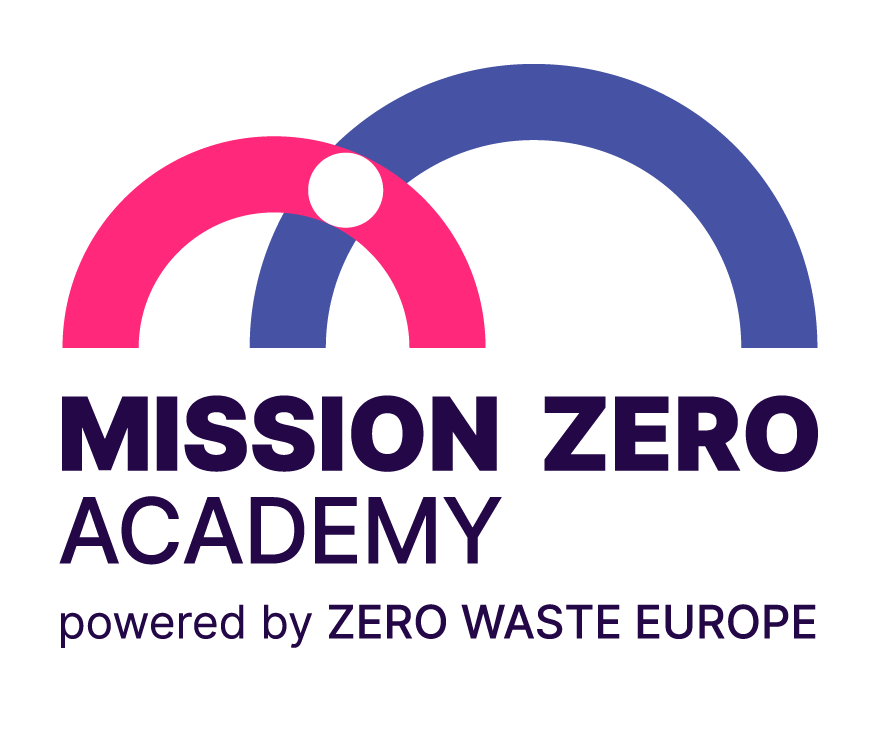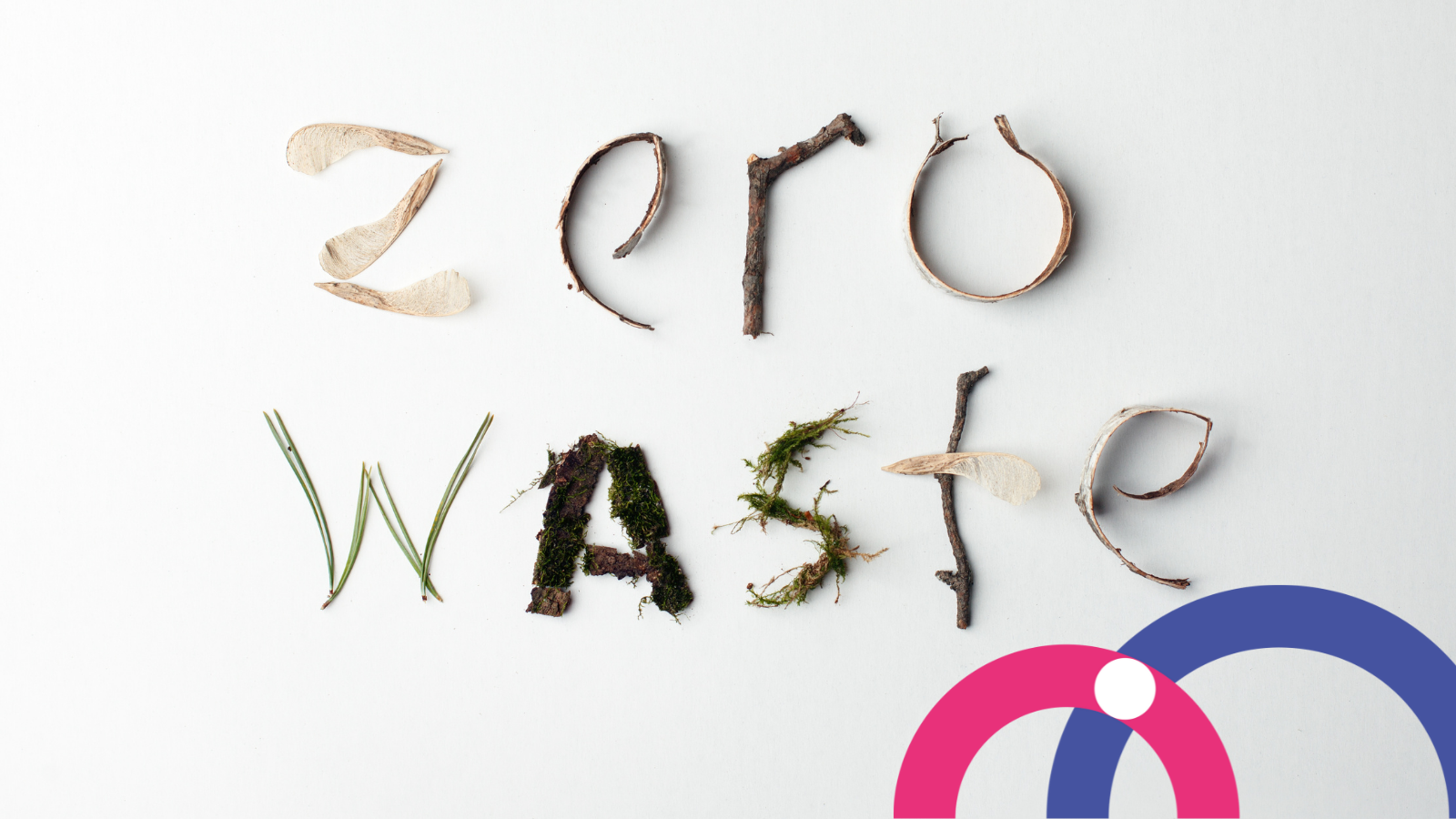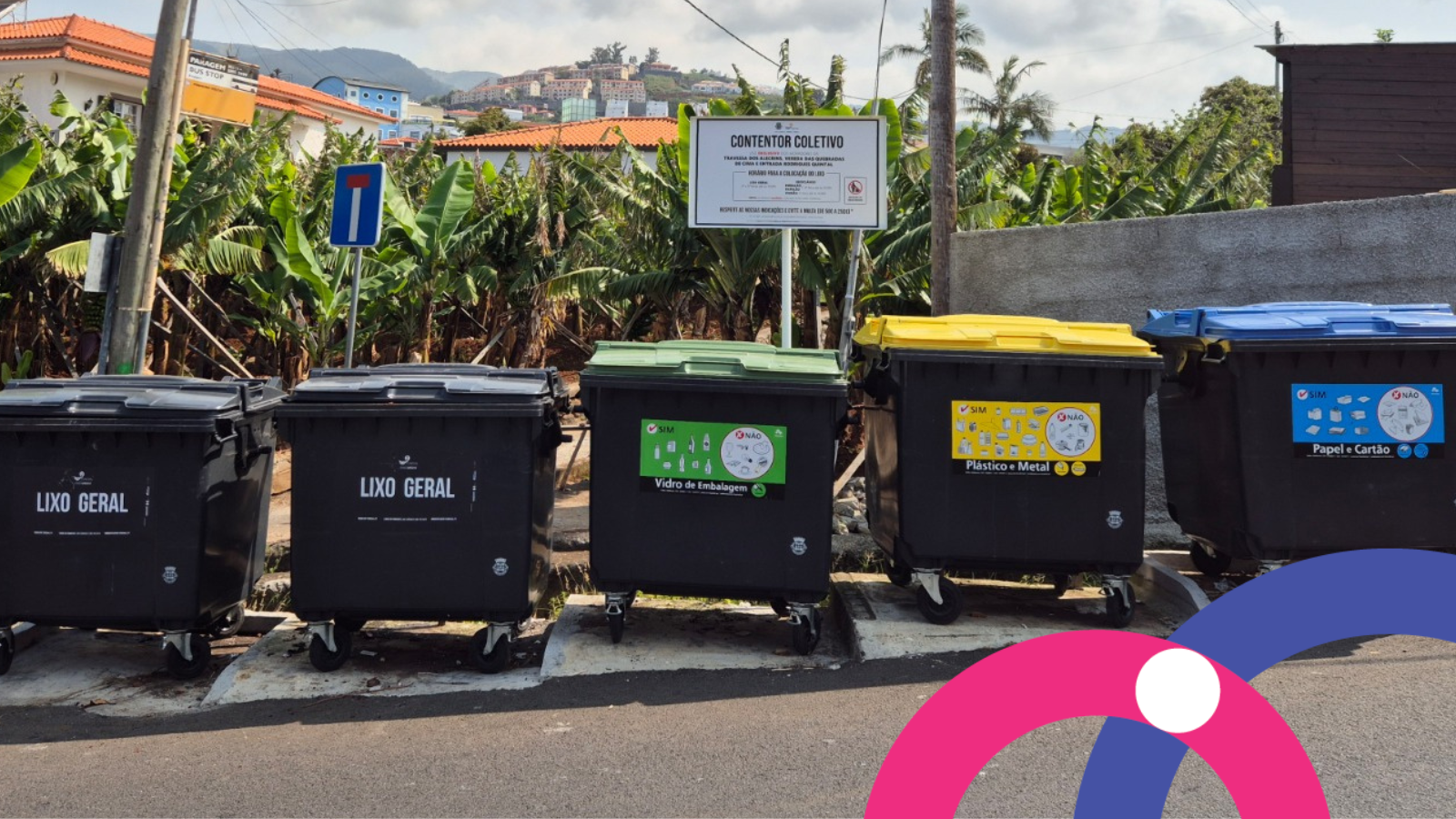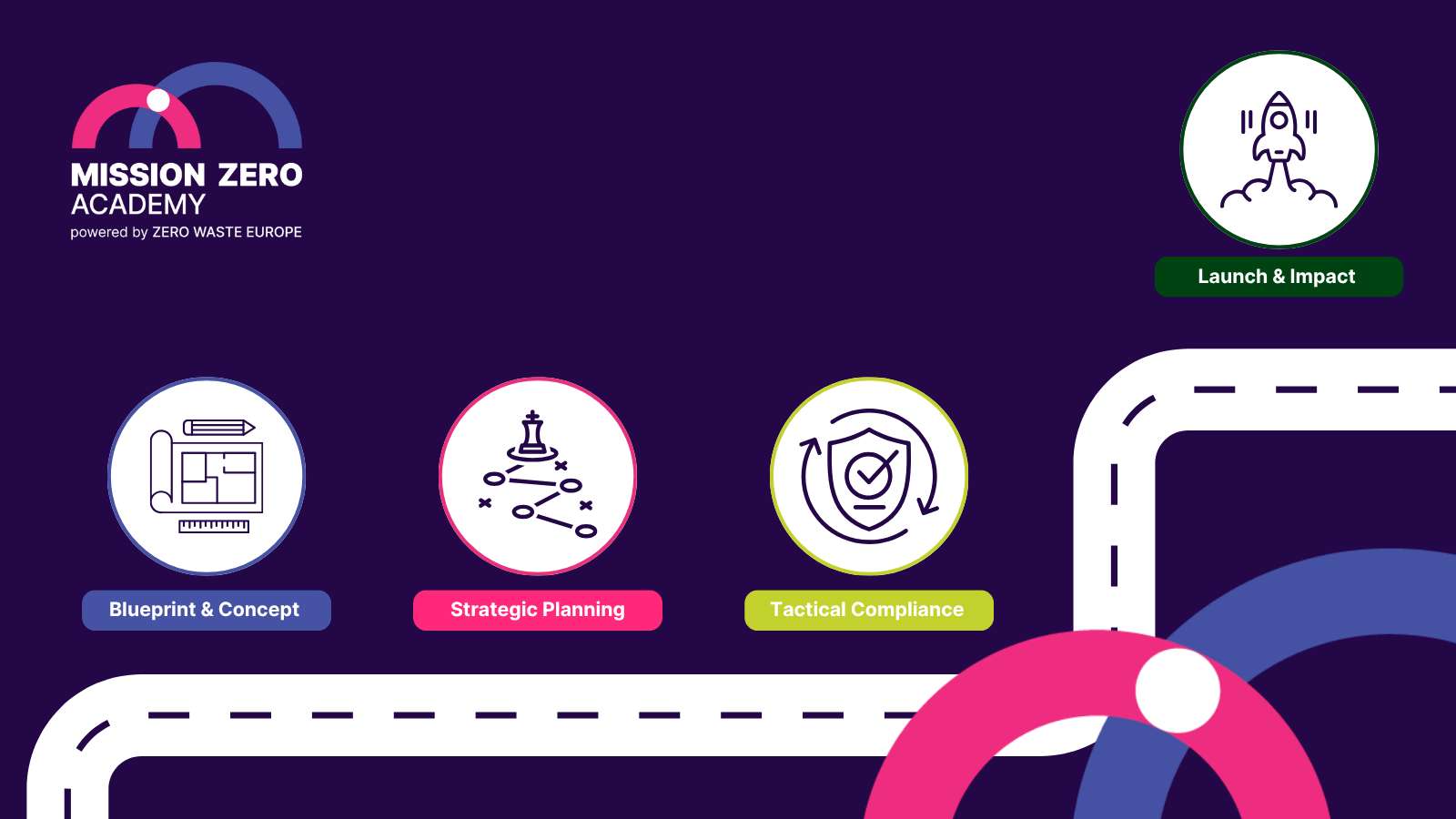Waste is one of the biggest problems of our time. Every year, the world generates 2.01 billion tonnes of municipal solid waste, and this shows no sign of reducing at the pace which we need it to. This rapidly growing issue cannot be solved by simply cleaning up the mess or by better managing it. We need to rethink how we use resources, consume them, and the way we collectively make decisions.
Across Europe, a growing number of cities are increasingly adopting zero waste policies and strategies. Municipalities can lead the way in redesigning the relationship between people and waste. In this article, you’ll find tips and guidelines for communities to start implementing a zero waste approach.
Good zero waste policy goes beyond just the environment
Our planet’s ecosystems have a way of working together to ensure all resources and energy produced remain balanced, in order to support all the organisms that live in them. Unfortunately, humans have not followed this same system, as evidenced by the current climate emergency and plastic pollution crisis. Zero waste is about rebuilding our ecosystems and designing ways to thrive with them rather than work against them.
Besides protecting the environment we live in, zero waste can also act as a framework for economic growth, social cohesion and community collectiveness. It provides tangible and accessible solutions with an emphasis on local production and increased innovation, allowing municipalities to save costs on their waste management and create more jobs locally.
Key principles for a zero waste approach
In a circular economy, resources and materials are viewed as commodities with high levels of value and worth, which must be held to three key principles: reduce and reuse, design for circularity, and separate collection and closing the loop.
Reduce and reuse
The best waste is waste that is not produced in the first place. Intervention at the design stage is therefore key to prevent municipalities from having to manage too much waste that shouldn’t exist. There are numerous ways city authorities can play a key role in facilitating reduction and reuse initiatives through, for example, training, promoting reusable alternatives, and even banning problematic materials.
“The best waste is waste that is not produced in the first place.”
Design for circularity
A product or packaging should be designed to not become waste, and retain as much of its value as possible once it is no longer used. An item that can’t be reused, repaired, refurbished, recycled or composted, should be redesigned or removed from the ecosystem. With a zero waste approach, the different types of waste become very visible. This can help identify harmful waste that cannot be recycled, to make sure it won’t end up contaminating recycling systems, as well as redesigning these products in the future.
There are some products that may be already designed for circularity, but waste collection and treatment systems cannot manage them yet. In these cases, it is important that municipalities work with the producer to set up specific has collection and recycling systems (e.g. reverse logistics) to ensure that such products don’t end up as waste.
Separate collection and closing the loop
So, preventable waste has been avoided and non-preventable waste has been designed to be circular. What’s next? The remaining task is to collect the materials or products in the most effective way to retain their value for the next use. Kerbside collection, deposit and refund schemes, as well as tax and price incentives, are some of the most powerful and effective tools to ensure maximum capture rates and clean separation of materials at the lowest cost. Effective separate collection systems can result in recycling rates of 80%.
Additionally, producers should be held responsible to cover the cost of collecting and treating the waste generated by their products. This encourages businesses to design items that are easily repairable, reusable or made from recyclable materials. As waste generation decreases and recycling rates increase, we should phase out disposal infrastructures, such as landfills or incinerators.
Ten steps for creating a zero waste plan for municipalities
The idea of a zero waste Europe is no longer viewed as some visionary project. Now, the question is not “if,” but rather “how” and “when” policymakers will implement zero waste policies to create a sustainable future for our society. The zero waste approach for municipalities can be defined through the following ten pillars.
- Consolidate your zero waste status by identifying your zero waste commitment
This means announcing your zero waste pledge and holding a preliminary public consultation.
- Establishing the tools to monitor and support
Establish a zero waste advisory board with local stakeholders and empower civil servants with zero waste training. In this phase, it’s key to collect data on waste generation and recycling rates, from which you will be able to measure the impact of your zero waste plan effectively.
- Define your roadmap
Planning a zero waste strategy that includes short, medium and long-term goals to reduce residual waste. In this plan, it is necessary to outline the key steps you will take to achieve your goals.
- Design and roll out kerbside collection
This must cover at the very least organics and dry recyclables (such as paper, cardboard, and glass). Plus, you should create municipal recycling centres for items that are too expensive or can’t be collected in regular kerbside pickups, such as light bulbs, construction and electronic waste.
- Refine your strategy to optimize organics management
Depending on your local operational and organizational situation, this can include home composting schemes, community composting centres, decentralized composting systems, and centralized professional composting systems for handling organic waste on a larger scale (perfect for densely populated cities). Whenever home composting isn’t feasible, consider industrial composting, or if local conditions permit, anaerobic digestion.
- Define and promote local waste prevention initiatives
Packaging free shops, refillable water stations, cloth nappies, zero waste public procurement can all help, as can regulations to encourage plastic free lifestyles like banning plastic bags and straws.
- Promote reuse and repair centres
Either at the municipal or district level, work with the local community to establish centres where products and resources can be reused by another community member or repaired by a local expert.
- Supplement your plan with laws and regulations that economically incentivize and encourage waste prevention
Examples of these are Pay-As-You-Throw (PAYT), Deposit Return Schemes (DRS), and Extended Producer Responsibility (EPR). Incentivizing the avoidance of waste can lead to businesses finding more circular solutions for packaging and materials and better separate collection of organic waste and dry recyclables.
- Analyse residual waste and improve systems by using data for feedback
Create a system that allows the composition of your residual waste to be regularly analysed and check which materials are most problematic when it comes to recycling or composting. This data can then be used to improve the efficiency of your collection schemes. Businesses and industry can also benefit from this data, for the redesign of products and packaging, encouraging uptake in recyclable and non-harmful materials.
10. Adopt or promote more efficient systems to manage residual waste
Adopting systems that improve the management of waste by:
- Selecting and researching residual waste streams;
- Recovering more recyclable materials;
- Stabilizing untreated organic waste;
- Using transitional landfill capacities for pretreated waste;
- Stabilizing, managing and adapting pre-treatment sites into compost and recycling ones.
More tips for a successful zero waste policy
Applying a zero waste approach enables us all to change the way we think about our consumption and production patterns. Resources and materials are viewed as commodities with high levels of value and worth, which must be kept within a circular economy through the above principles. There are two key factors necessary for a zero waste approach to succeed.
Culture change, a change in our current perspective, is needed and has to be embedded in all of a city’s activities. Our current European linear pattern of production, consumption, and disposal reflects the myth that we live in a world with infinite resources, which is simply not the case. In addition, the outcome of zero waste plans heavily depends on the participation, education, and engagement of the community. Citizens and local entrepreneurs should be invited to actively participate in the development of the resource management system, monitor its implementation, and provide feedback.
Become a Zero Waste Certified City though MiZA
Whether you are someone working at a municipality, waste professional, business owner or resident, you will find that zero waste is relevant for you. If you would like more information and support in your journey towards zero waste, consider becoming zero waste certified through MiZA.
This independent, third party assessed certification standard has been designed to:
- help municipalities to comply (and go beyond) with EU and national regulations;
- promote the implementation of efficient systems which save natural and economic resources, as well as
- reinforce the positive image of the municipality, which will gain worldwide recognition and credibility. This in turn results in job creation, funding opportunities, economic incentives, and prestigious event hosting attraction.
Through its online training platform and the support of a network of local zero waste experts, MiZA offers a supportive package to help you in your zero waste and circular economy implementation at the municipal level.
This article is based upon Zero Waste Europe’s guide, ‘Creating a methodology for zero waste municipalities.’





